
Krkonoše National Park: The Jewel of Czechia
Explore Krkonoše National Park, Czechia's premier destination for hiking, skiing, and experiencing rich folklore in a stunning mountainous landscape.
Krkonoše National Park, located in the northern part of Czechia, is a stunning destination for nature lovers and adventure seekers. Encompassing the highest mountain range in the country, the park offers breathtaking landscapes, diverse wildlife, and a rich cultural heritage. Visitors can explore lush forests, cascading waterfalls, and picturesque meadows, all set against the backdrop of the majestic Krkonoše Mountains. The park is a haven for hikers, with a network of well-marked trails suitable for all skill levels. One of the most popular routes leads to the summit of Sněžka, the highest peak in Czechia. Along the way, you will encounter charming mountain huts where you can rest and enjoy traditional Czech cuisine. In winter, Krkonoše transforms into a winter sports paradise, offering excellent skiing, snowboarding, and cross-country skiing opportunities. Beyond its natural beauty, Krkonoše National Park is rich in folklore and history. The region is home to the legendary figure of Krakonoš, a benevolent giant who protects the mountains. You can learn more about local legends and traditions at the park's visitor centers and museums. Whether you are seeking outdoor adventure or a peaceful retreat, Krkonoše National Park promises an unforgettable experience.
Local tips in Krkonoše National Park
- Visit in late spring or early autumn to avoid the crowds and enjoy mild weather.
- Carry cash, as some mountain huts and smaller establishments may not accept credit cards.
- Wear sturdy hiking boots, as some trails can be rocky and uneven.
- Check weather conditions before heading out, as the weather can change rapidly in the mountains.
- Respect local wildlife and stay on marked trails to preserve the natural environment.
Krkonoše National Park: The Jewel of Czechia
Krkonoše National Park, located in the northern part of Czechia, is a stunning destination for nature lovers and adventure seekers. Encompassing the highest mountain range in the country, the park offers breathtaking landscapes, diverse wildlife, and a rich cultural heritage. Visitors can explore lush forests, cascading waterfalls, and picturesque meadows, all set against the backdrop of the majestic Krkonoše Mountains. The park is a haven for hikers, with a network of well-marked trails suitable for all skill levels. One of the most popular routes leads to the summit of Sněžka, the highest peak in Czechia. Along the way, you will encounter charming mountain huts where you can rest and enjoy traditional Czech cuisine. In winter, Krkonoše transforms into a winter sports paradise, offering excellent skiing, snowboarding, and cross-country skiing opportunities. Beyond its natural beauty, Krkonoše National Park is rich in folklore and history. The region is home to the legendary figure of Krakonoš, a benevolent giant who protects the mountains. You can learn more about local legends and traditions at the park's visitor centers and museums. Whether you are seeking outdoor adventure or a peaceful retreat, Krkonoše National Park promises an unforgettable experience.
When is the best time to go to Krkonoše National Park?
Iconic landmarks you can’t miss
The Timber Trail, Krkonoše
Discover the Timber Trail in Krkonošsko National Park, a scenic hiking experience above the treetops, perfect for nature lovers and adventure seekers.
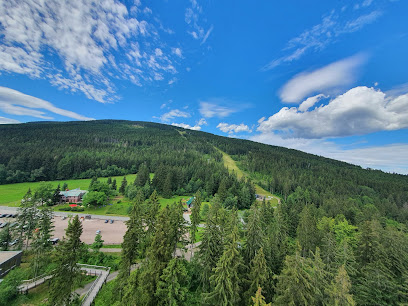
Černohorské rašeliniště
Explore the stunning landscapes, diverse wildlife, and serene walking paths of Černohorské rašeliniště National Park, a true natural gem in the Czech Republic.

Obří důl
Explore the enchanting landscapes of Obří Důl National Forest, where stunning views and diverse wildlife await every nature enthusiast.

Kotelní jámy
Explore the stunning natural beauty of Kotelní jámy in Krkonoš National Park, a perfect escape for outdoor enthusiasts and nature lovers.

Krkonošský pohádkový betlém
Explore the magical Krkonošský pohádkový betlém in Vrchlabí, a captivating showcase of Czech folklore and exquisite craftsmanship.

Unmissable attractions to see
Kamieńczyk Waterfall
Explore the natural beauty of Kamieńczyk Waterfall, a stunning attraction in Szklarska Poręba, perfect for nature lovers and adventure seekers.

Karkonosze National Park
Discover the natural beauty and adventure of Karkonosze National Park, a breathtaking destination perfect for hikers and nature lovers in Poland.

The Timber Trail, Krkonoše
Explore the breathtaking Timber Trail in Krkonošé, where lush forests and stunning vistas await every adventurer and nature lover.

Mumlava Falls
Explore the stunning Mumlava Falls in the Krkonoš Mountains, a breathtaking natural attraction perfect for hiking and relaxation amidst serene landscapes.

Valdštejn Castle
Experience the historical charm and breathtaking views of Valdštejn Castle, a stunning Renaissance landmark in the heart of the Czech Republic.

Pramen Labe
Explore Pramen Labe, the serene source of the Elbe River, where breathtaking landscapes and hiking adventures await in the heart of the Czech mountains.
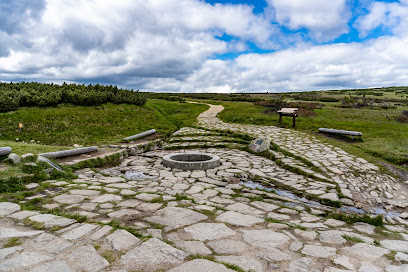
Pancava Falls
Discover the stunning Pancava Falls, the highest waterfall in the Czech Republic, nestled in the beautiful Krkonošsko-jesenická mountains, perfect for hiking and nature lovers.

Černá Hora Lookout
Experience the stunning vistas and hiking adventures at Černá Hora Lookout in the breathtaking Krkonoš Mountains.

Elbe Dam
Discover the breathtaking Elbe Dam, a perfect blend of nature and engineering in the heart of Krkonošsko-jesenická, offering stunning views and hiking trails.

Bobsled Spindleruv Mill
Discover the excitement of summer tobogganing at Bobsled Spindleruv Mill, an exhilarating amusement center in the stunning landscape of Spindleruv Mlyn.

White Bridge - Spindler's Mill
Explore the stunning White Bridge in Spindler's Mill, a historical landmark offering breathtaking views and serene natural beauty for every traveler.

Maiden Rocks
Experience the awe-inspiring beauty of Maiden Rocks in Špindlerův Mlýn, a must-visit destination for nature lovers and adventurers seeking breathtaking views.

Vrchlabi Chateau
Experience the beauty and history of Vrchlabi Chateau, a captivating destination blending stunning architecture and scenic hiking in the heart of the Czech Republic.

Hutský Falls
Experience the natural wonder of Hutský Falls, a breathtaking landmark in the Czech Republic, perfect for adventure seekers and nature lovers.

Memorial to the Victims of the Giant Mountains
Explore the solemn beauty of the Memorial to the Victims of the Giant Mountains in Špindlerův Mlýn, a poignant tribute surrounded by breathtaking nature.
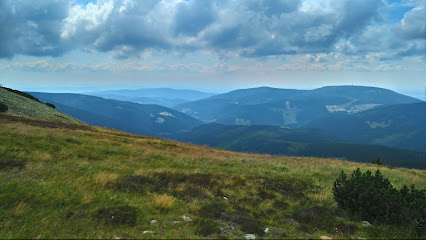
Essential places to dine
Restaurant & Pension U Studny
Savor authentic Czech cuisine while enjoying stunning mountain views at Restaurant & Pension U Studny in Harrachov.

White Elbe Inn
Experience comfort and adventure at White Elbe Inn in Špindlerův Mlýn – your gateway to stunning hikes and mountain retreats.

Restaurace pod Jasanem
Experience authentic Czech cuisine amidst the stunning landscapes of Harrachov at Restaurace pod Jasanem.

Penzion Verde Rosa
Experience cozy accommodations and delightful dining at Penzion Verde Rosa in scenic Harrachov.

Restaurace Lebeda
Experience authentic Czech cuisine amidst stunning mountain views at Restaurace Lebeda in Špindlerův Mlýn.

Děčínská bouda
Experience authentic Czech cuisine amidst breathtaking mountain views at Děčínská Bouda in Pec pod Sněžkou.

Lomnice Hotel & Restaurant
Discover Lomnice Hotel & Restaurant: A delightful blend of Czech cuisine and cozy accommodations in stunning Špindlerův Mlýn.

Dvorská Bouda
Discover Dvorská Bouda: A Mountain Retreat Offering Cozy Accommodation and Delicious Traditional Cuisine Amidst Nature's Splendor.

Horská chata Portášky
Discover serene mountain lodging and exquisite dining at Horská chata Portášky in Velká Úpa - your gateway to adventure and relaxation.

Markets, malls and hidden boutiques
Krkonoše National Park
Explore the breathtaking landscapes and rich biodiversity of Krkonoše National Park, the crown jewel of the Czech Republic's natural wonders.

Kaufland Vrchlabí
Explore Kaufland Vrchlabí: Your ultimate destination for fresh produce, international foods, and essentials in the heart of the Czech Republic.

NORMA, k.s. - Bedřichov
Discover the convenience of NORMA supermarket in Bedřichov, where locals and tourists find everything from fresh produce to local treats.
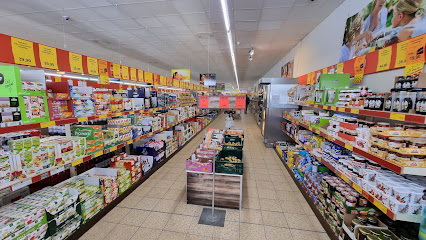
Infocentrum SPINDL.info
Discover the best of Špindlerův Mlýn at Infocentrum SPINDL.info - your go-to spot for gifts, information, and unforgettable adventures.
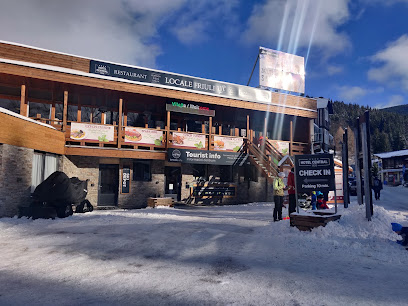
Info and Travel Agency Turista, Pec Pod Sněžkou
Explore Pec Pod Sněžkou with Info and Travel Agency Turista, your gateway to unforgettable alpine adventures and local insights.

Asia shop
Explore a world of flavors at Asia Shop in Špindlerův Mlýn, where local brands meet authentic Asian cuisine.

INTERSPORT Pec pod Sněžkou
Discover top-quality sporting goods and apparel at INTERSPORT Pec pod Sněžkou, your one-stop shop for outdoor adventures in the Czech Republic.

Pekařství u Dolského Potoka - Pekárna Špindlerův Mlýn
Discover the authentic taste of Czech baked goods at Pekařství u Dolského Potoka, a treasured bakery in Špindlerův Mlýn.

Pepa Sports
Discover Pepa Sports in Pec pod Sněžkou for all your skiing and cycling needs, and embrace the adventure in the heart of nature.
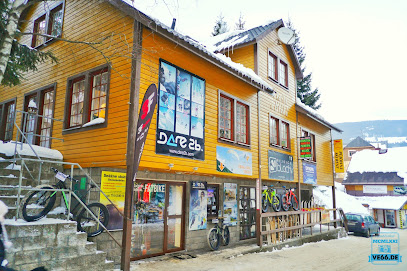
Š. Pekárna NÁŠ CHLÉB ŠPEKÁRNA
Discover the authentic flavors of Špindlerův Mlýn at Š. Pekárna NÁŠ CHLÉB ŠPEKÁRNA, where traditional baking meets artisanal excellence.

JIP potraviny
Explore JIP Potraviny in Špindlerův Mlýn for a delightful grocery shopping experience with local flavors and friendly service.

SUMMIT-SPORT
Explore the outdoors in Špindlerův Mlýn with top-quality gear from Summit-Sport, your ultimate sportswear destination.

Happy Hill Sport
Explore the great outdoors with top-quality ski and sporting equipment from Happy Hill Sport in Pec pod Sněžkou.

HS-SPORT - Kilpi store a Regatta shop
Explore the great outdoors with top-notch gear from HS-SPORT in Vrchlabí, your go-to sportswear store for adventure.

Spindl Motion Shop & Rental Medvědín
Discover your adventure at Spindl Motion Shop & Rental Medvědín, where quality outdoor gear meets the stunning beauty of Špindlerův Mlýn.

Essential bars & hidden hideouts
Silver Rock music bar
Discover the vibrant nightlife of Špindlerův Mlýn at Silver Rock Music Bar, where live music and a lively atmosphere await.

PUB Špindl 14
Discover PUB Špindl 14, a charming restaurant in Špindlerův Mlýn, where grilled delights and local beers create an unforgettable dining experience.
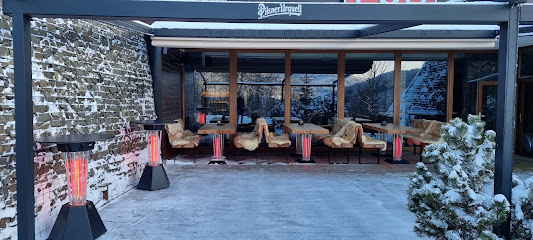
Fermé
Discover the cozy Fermé bar in Pec pod Sněžkou, where delicious food and creative cocktails meet a warm and inviting atmosphere.

bar 77
Discover Bar 77 in Špindlerův Mlýn - a lively dart bar where camaraderie meets competition amidst stunning mountain views.

Club Dolska
Experience the vibrant nightlife of Špindlerův Mlýn at Club Dolska, where laughter, dancing, and great drinks await every visitor.

Ragtime Bar
Experience the vibrant nightlife at Ragtime Bar in Pec pod Sněžkou, where great drinks and a cozy atmosphere await.
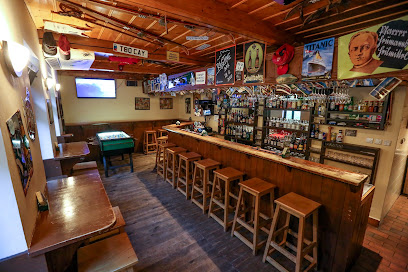
Krkonošský limobar
Experience the charm of Krkonošský Limobar in Špindlerův Mlýn, where stunning views meet a vibrant bar atmosphere, perfect for unwinding after outdoor adventures.

Gazela
Experience the vibrant nightlife of Špindlerův Mlýn at Gazela, where great drinks and lively music meet in a cozy mountain bar.

ZUZU BAR DISCO ŠPINDLERŮV MLÝN
Experience the vibrant nightlife of Špindlerův Mlýn at ZUZU BAR DISCO, where music, dance, and a lively atmosphere await you.
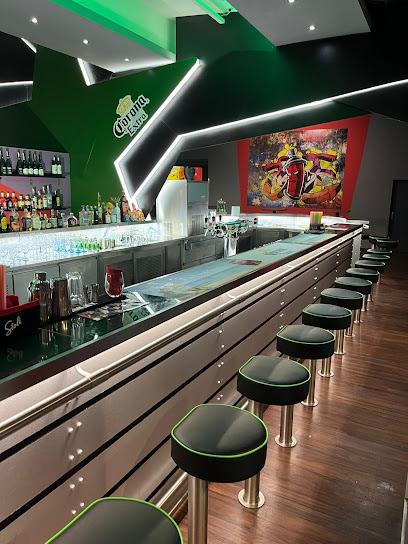
Lesní samobslužný bar
Experience the self-service charm of Lesní Samobslužný Bar in the heart of Špindlerův Mlýn, where nature meets relaxation and local flavors.
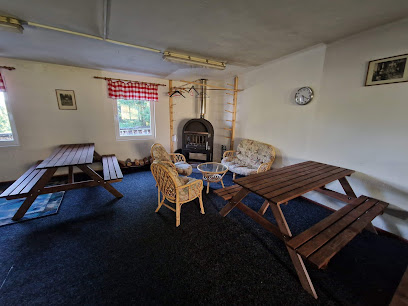
Rondo Base Bistro
Experience the cozy charm of Rondo Base Bistro in Vrchlabí—your perfect retreat for refreshing drinks and local atmosphere.

Hennessy Bar
Discover the charm of Hennessy Bar in Špindlerův Mlýn, where elegance meets the alpine spirit, perfect for unwinding after your mountain adventures.

Puzzle Patejdlovka II
Experience the vibrant nightlife at Puzzle Patejdlovka II, a charming bar in Špindlerův Mlýn, perfect for indulging in local drinks and lively atmosphere.

The Stag's Feeding Trough
Discover the warmth and charm of The Stag's Feeding Trough, a welcoming bar in Špindlerův Mlýn, perfect for unwinding after outdoor adventures.

Moravský svařák Tesařík by Labužník
Experience authentic local flavors at Moravský svařák Tesařík, a cozy bar in Špindlerův Mlýn, perfect for relaxation after outdoor adventures.

Local Phrases about Krkonoše National Park
-
- HelloAhoj
[ahoy] - GoodbyeNashledanou
[nash-led-ah-noh] - YesAno
[ah-noh] - NoNe
[neh] - Please/You're welcomeProsím
[pro-seem] - Thank youDěkuji
[dyeh-koo-yee] - Excuse me/SorryPromiňte
[pro-meen-teh] - How are you?Jak se máte?
[yak seh mah-teh] - Fine. And you?Dobře. A vy?
[dob-reh. ah vee] - Do you speak English?Mluvíte anglicky?
[mloo-vee-teh ahng-leet-skee] - I don't understandNerozumím
[neh-roh-zoo-meem]
- HelloAhoj
-
- I'd like to see the menu, pleaseRád bych viděl menu, prosím
[rahd bikh vee-dyel meh-noo, pro-seem] - I don't eat meatNemám rád maso
[neh-mahm raad mah-soh] - Cheers!Na zdraví!
[nah zdra-vee] - I would like to pay, pleaseChtěl bych zaplatit, prosím
[khtyel bikh zap-la-teet, pro-seem]
- I'd like to see the menu, pleaseRád bych viděl menu, prosím
-
- Help!Pomoc!
[poh-mohts] - Go away!Jdi pryč!
[ydee preets] - Call the Police!Zavolejte policii!
[za-vo-ley-teh poh-lee-tsee] - Call a doctor!Zavolejte lékaře!
[za-vo-ley-teh lay-kar-zheh] - I'm lostZtratil jsem se
[ztra-teel ysem seh] - I'm illJsem nemocný
[ysem neh-mohts-nee]
- Help!Pomoc!
-
- I'd like to buy...Chtěl bych koupit...
[khtyel bikh koah-peeht...] - I'm just lookingJen se dívám
[yen seh dee-vaam] - How much is it?Kolik to stojí?
[ko-leek toh stoy-ee] - That's too expensiveTo je příliš drahé
[toh yeh pree-leesh drah-heh] - Can you lower the price?Můžete snížit cenu?
[moo-zheh-teh snee-zheet tseh-noo]
- I'd like to buy...Chtěl bych koupit...
-
- What time is it?Kolik je hodin?
[ko-leek yeh hoh-deen] - It's one o'clockJe jedna hodina
[yeh yed-nah hoh-dee-nah] - Half past (10)Půl jedenácté
[pool yed-nyahk-teh] - MorningRáno
[rah-noh] - AfternoonOdpoledne
[ohd-poh-led-neh] - EveningVečer
[veh-cher] - YesterdayVčera
[v-cheh-rah] - TodayDnes
[dnes] - TomorrowZítra
[zee-trah] - 1Jedna
[yed-nah] - 2Dvě
[dvyeh] - 3Tři
[tree] - 4Čtyři
[ctyr-zhee] - 5Pět
[pyet] - 6Šest
[shest] - 7Sedm
[sedm] - 8Osm
[osm] - 9Devět
[de-vyet] - 10Deset
[de-set]
- What time is it?Kolik je hodin?
-
- Where's a/the...?Kde je...
[kdeh yeh] - What's the address?Jaká je adresa?
[yah-kah yeh ah-dreh-sah] - Can you show me (on the map)?Můžete mi to ukázat (na mapě)?
[moo-zheh-teh mee toh oo-kah-zat (nah mah-peh)] - When's the next (bus)?Kdy jede další (autobus)?
[kdee yeh-deh dah-lshee (ow-toh-boos)] - A ticket (to ....)Jedno jízdenka (do ...)
[yed-no yeez-dehn-kah (doh)]
- Where's a/the...?Kde je...
History of Krkonoše National Park
-
Krkonoše National Park, known as KRNAP (Krkonošský národní park) in Czech, was established in 1963 to protect the unique ecosystems and geological formations of the Krkonoše Mountains. These mountains, also known as the Giant Mountains, are the highest range in the Czech Republic. They were formed over 500 million years ago during the Paleozoic era.
-
The Krkonoše region was sparsely populated until the medieval period when settlers began to establish villages and towns. These early inhabitants were primarily involved in agriculture, livestock farming, and logging. The region's challenging terrain and harsh weather conditions made life difficult, but the settlers adapted to their environment and developed a unique mountain culture.
-
During the 16th and 17th centuries, the Krkonoše Mountains became a significant center for mining. Rich deposits of precious metals, particularly silver and gold, attracted miners from across Europe. The town of Jilemnice became a prominent mining hub, contributing to the region's economic growth. However, the depletion of mineral resources eventually led to a decline in mining activities.
-
The Krkonoše Mountains are steeped in folklore and legends. One of the most famous figures in local folklore is Krakonoš, also known as Rübezahl in German. Krakonoš is a mythical giant and guardian of the mountains, often depicted as a benevolent figure who helps those in need but punishes wrongdoers. His stories have been passed down through generations and remain an integral part of the region's cultural identity.
-
The 19th century marked the beginning of tourism in the Krkonoše Mountains. The construction of mountain huts, trails, and observation towers made the region more accessible to visitors. The picturesque landscapes and unique flora and fauna attracted nature enthusiasts and mountaineers. The establishment of the first mountain rescue service in 1850 further facilitated safe exploration of the area.
-
During World War II, the Krkonoše region, like much of Europe, experienced significant upheaval. The mountains served as a strategic location for both resistance fighters and occupying forces. The area's dense forests and rugged terrain provided cover for partisan activities. After the war, the region underwent a period of reconstruction and recovery, with a renewed focus on conservation and tourism.
-
Since its establishment, Krkonoše National Park has been dedicated to preserving the region's unique ecosystems and biodiversity. Modern conservation efforts include habitat restoration, wildlife protection, and sustainable tourism practices. The park is a UNESCO Biosphere Reserve, reflecting its global importance as a natural heritage site. Ongoing research and environmental monitoring ensure the continued protection of this pristine landscape.
Krkonoše National Park Essentials
-
Krkonoše National Park is located in the northern part of Czechia, near the border with Poland. The nearest international airport is Václav Havel Airport in Prague, approximately 150 kilometers away. From Prague, you can take a train or bus to the nearby towns of Vrchlabí or Špindlerův Mlýn, which serve as gateways to the park. The journey typically takes around 2 to 3 hours by road or rail. Car rentals are also available in Prague for those who prefer to drive.
-
Within Krkonoše National Park, transportation options include local buses, taxis, and rental cars. Many of the park's trails and attractions are accessible by foot or bicycle. During winter, ski lifts and shuttle services are available to transport visitors to various ski resorts. Public transport is reliable and connects the main towns within the park, making it easy to explore different areas.
-
The official currency in Czechia is the Czech Koruna (CZK). Credit cards are widely accepted in hotels, restaurants, and larger shops within the park. However, it is advisable to carry cash for smaller establishments, local markets, and remote areas. ATMs are available in towns like Vrchlabí and Špindlerův Mlýn, where you can withdraw cash if needed.
-
Krkonoše National Park is generally a safe destination for tourists. However, standard precautions should be taken, such as keeping an eye on your belongings and avoiding isolated areas after dark. There are no specific high-crime areas targeting tourists, but it is always best to stay vigilant and aware of your surroundings. Weather conditions can change rapidly in the mountains, so always check forecasts and be prepared for sudden changes.
-
In case of emergency, dial 112 for immediate assistance. The park has several ranger stations and tourist information centers where you can seek help. Medical facilities are available in nearby towns like Vrchlabí and Špindlerův Mlýn. It is recommended to have travel insurance that covers medical emergencies, especially if you plan to engage in outdoor activities like hiking or skiing.
-
Fashion: Do wear comfortable and weather-appropriate clothing, especially if you plan to hike or explore the outdoors. Avoid wearing flashy or expensive items. Religion: Do respect local customs and traditions. Although the area is not highly religious, it's always good to be respectful in any cultural or historical sites. Public Transport: Do be respectful and give up your seat to elderly passengers. Don’t eat or drink on public transport. Greetings: Do greet people with a friendly 'Ahoj' (hello) or a handshake. Eating & Drinking: Do try local delicacies and accept food offerings graciously. Don’t refuse hospitality, as it is considered impolite.
-
To experience Krkonoše National Park like a local, visit the local markets in towns such as Vrchlabí, where you can buy fresh produce and traditional Czech goods. Engage with locals, as they are often friendly and willing to share stories about the region's history and culture. Don’t miss out on trying the local cuisine, especially dishes like 'smažený sýr' (fried cheese) and 'česnečka' (garlic soup). For a unique experience, consider visiting during off-season periods to enjoy the park's natural beauty without the crowds.
Nearby Cities to Krkonoše National Park
-
Things To Do in Kutná Hora
-
Things To Do in Wroclaw
-
Things To Do in Prague
-
Things To Do in Dresden
-
Things To Do in Opole
-
Things To Do in Olomouc
-
Things To Do in Brno
-
Things To Do in Plzeň
-
Things To Do in Karlovy Vary
-
Things To Do in České Budějovice
-
Things To Do in Ostrava
-
Things To Do in Poznan
-
Things To Do in Gliwice
-
Things To Do in Český Krumlov
-
Things To Do in Leipzig










